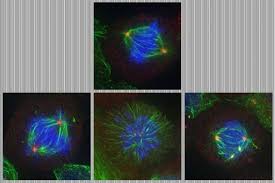
Breaking News
 Dead Men Tell No Tales: How Israel Eliminates Witnesses
Dead Men Tell No Tales: How Israel Eliminates Witnesses
 This Is Why Nice Neighborhoods Have No Blacks In It.
This Is Why Nice Neighborhoods Have No Blacks In It.
 Canada Locks Down the Woods. Fines Range from $25K – $150K for Hiking, Biking & Fishing
Canada Locks Down the Woods. Fines Range from $25K – $150K for Hiking, Biking & Fishing
 Trump Puts Washington DC Under Federal Control, Calls in 800 National Guard Troops
Trump Puts Washington DC Under Federal Control, Calls in 800 National Guard Troops
Top Tech News
 3D printing set to slash nuclear plant build times & costs
3D printing set to slash nuclear plant build times & costs
 You can design the wheels for NASA's next moon vehicle with the 'Rock and Roll Challenge
You can design the wheels for NASA's next moon vehicle with the 'Rock and Roll Challenge
 'Robot skin' beats human reflexes, transforms grip with fabric-powered touch
'Robot skin' beats human reflexes, transforms grip with fabric-powered touch
 World's first nuclear fusion plant being built in US to power Microsoft data centers
World's first nuclear fusion plant being built in US to power Microsoft data centers
 The mitochondria are more than just the "powerhouse of the cell" – they initiate immune...
The mitochondria are more than just the "powerhouse of the cell" – they initiate immune...
 Historic Aviation Engine Advance to Unlock Hypersonic Mach 10 Planes
Historic Aviation Engine Advance to Unlock Hypersonic Mach 10 Planes
 OpenAI CEO Sam Altman Pitches Eyeball-Scanning World ID to Bankers
OpenAI CEO Sam Altman Pitches Eyeball-Scanning World ID to Bankers
 New 3D-printed titanium alloy is stronger and cheaper than ever before
New 3D-printed titanium alloy is stronger and cheaper than ever before
 What is Unitree's new $6,000 humanoid robot good for?
What is Unitree's new $6,000 humanoid robot good for?
 "No CGI, No AI, Pure Engineering": Watch Raw Footage Of 'Star Wars'-Style Speeder
"No CGI, No AI, Pure Engineering": Watch Raw Footage Of 'Star Wars'-Style Speeder
MIT study identifies dynamic drug duo that's surprisingly effective against cancer

Now researchers at MIT have identified a surprising new dynamic drug duo, combining two classes that are already beginning to be widely used. Interestingly, the combo appears to work in a completely different way to what scientists previously expected.
The researchers started with a class of drugs called PLK1 inhibitors, which have proven effective in the past and are beginning to be tested in phase 2 clinical trials. The team set out to boost the effects of this type of drug, to see if it could be made even more effective.
PLK1 inhibitors primarily work by messing with mitosis, the process cancer cells use to divide and spread quickly. But as a side effect, they can also cause oxidative damage to cells – and this is the area the team wanted to give a leg up to. The researchers reasoned that PLK1 inhibitors could be even more potent a cancer-killer if they paired them up with another drug that prevents cells from repairing oxidative damage.



